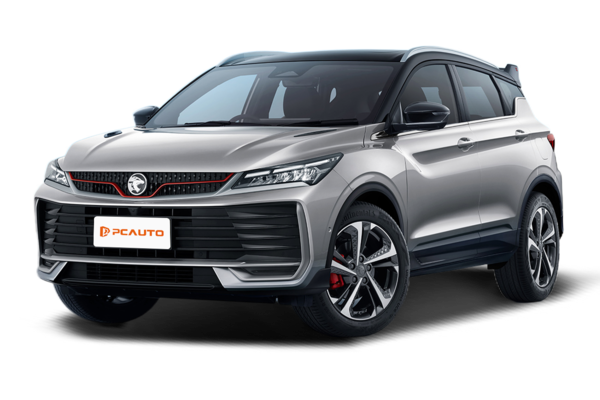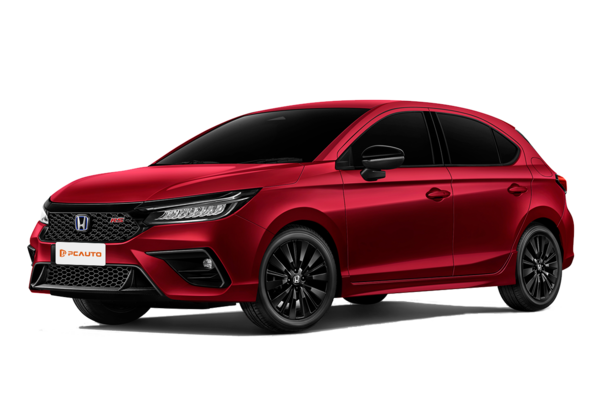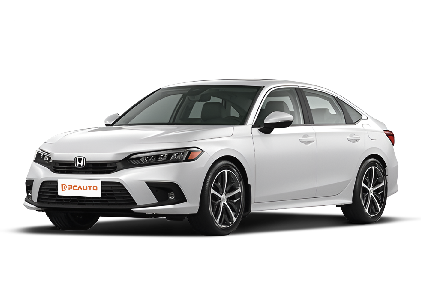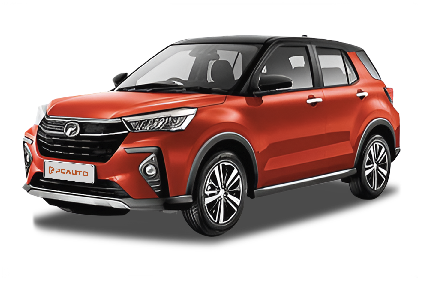Q
what is amg in mercedes
AMG is Mercedes-Benz's high-performance division, and its full name tells the story: Aufrecht, Melcher, and Großaspach. That's a nod to founders Hans Werner Aufrecht and Erhard Melcher, plus Aufrecht's hometown of Großaspach, where it all began back in 1967. These guys specialize in cranking up Mercedes models to 11, and let me tell you, they've got a serious following here in Malaysia too.
What makes an AMG tick? Well, it's not just about slapping a bigger engine under the hood—though you *do* get that. Think more powerful motors, suspension that's been dialed in for pure driving thrills, and those unmistakable AMG styling cues inside and out. Whether it's the legendary 4.0-liter twin-turbo V8 growling away or the latest plug-in hybrid tech delivering instant punch, the goal is always that next-level driving rush.
On Malaysian roads, you'll spot the usual suspects: the pocket rocket A 45 S, the brute force of the C 63, and of course, the iconic G 63. The beauty of these machines? They're just as happy tackling your daily commute as they are tearing up a track day. And let's not forget AMG's penchant for limited-edition models and that "One Man, One Engine" philosophy—each powerplant is hand-built by a single technician, adding that extra layer of exclusivity and passion.
For Malaysian petrolheads chasing speed and excitement, AMG is hands down one of the most alluring badges in the Mercedes lineup. No question about it.
Special Disclaimer: This content is published by users and does not represent the views or position of PCauto.
Popular Models
Related Q&A
Q
Which is better, a 1.6 or 2.0 engine?
Choosing between a 1.6L or 2.0L engine really comes down to how you use your car. The 1.6L is easier on fuel and cheaper to maintain—perfect for city driving or tighter budgets. While it won’t blow you away with power, it handles daily commutes just fine.
Now, the 2.0L packs more punch, especially for highway driving or if you enjoy a livelier ride. But expect slightly higher fuel and maintenance costs.
At the end of the day, it’s about your driving style and needs. Don’t forget—turbocharged small engines now deliver near-big-displacement power, but naturally aspirated engines still win for smoothness and reliability. My advice? Test drive both and see what clicks.
Q
Is a 1.6 L engine a V6?
A 1.6-liter engine is typically not a V6 but an inline-four (L4) design. Smaller displacement engines prioritize fuel efficiency and compact packaging—inline configurations are cheaper to build and easier to maintain.
V6 engines, with six cylinders arranged in a V-shape, usually start around 2.5 liters (e.g., common 3.0L V6 or 2.5L V6 units). They deliver smoother operation and stronger power than four-cylinders but bulkier and thirstier.
In local markets, 1.6L models like the Proton Saga, Perodua Myvi, or Japanese Corollas all use inline-fours, while midsize sedans like the Camry 2.5L opt for V6s. For daily driving, a four-cylinder makes sense; if you crave refinement and acceleration, a six-cylinder is tempting—just weigh the higher fuel costs and sticker price. Turbocharging now lets small four-cylinders punch close to a V6’s performance, though.
Q
Is 1.5 l the same as 1500cc?
When it comes to engine displacement, 1.5 liters and 1500cc are exactly the same thing—just different ways of saying it. Since 1 liter equals 1000 cubic centimeters (cc), 1.5 liters naturally translates to 1500cc. You’ll often see this kind of labeling in car specs, especially with Japanese and European models.
Engine size is a key measure of an engine’s total capacity, and generally, the bigger the displacement, the more power you get—though fuel consumption goes up too. The 1.5-liter engine hits a sweet spot for many drivers, offering a solid balance of performance and efficiency, which is why it’s so popular in everyday cars. You’ll find it in plenty of well-known models, both naturally aspirated and turbocharged. Speaking of turbos, they’re a big reason why 1.5T engines are a common pick—they squeeze out extra power without the need for a larger displacement.
One more thing to keep in mind: engine size can affect road tax costs, so understanding these units is useful when budgeting for a car.
Q
What is the difference between 1l and 1.2 L engine?
The key difference between 1-liter (1L) and 1.2-liter (1.2L) engines comes down to displacement—the total volume of all cylinders in an engine, measured in liters. Generally, a larger displacement means more power and torque, so a 1.2L engine will likely feel stronger during acceleration, highway driving, or when tackling hills with a load. That said, it’ll also drink a bit more fuel compared to the 1L.
The 1L, being smaller, prioritizes fuel efficiency, making it a smart pick for city commuting or everyday runs. On the flip side, the 1.2L’s extra performance often means higher manufacturing costs, which might bump up the car’s price tag. Plus, the 1L’s compact size fits better in smaller or budget-friendly models.
Your choice really hinges on driving needs: go for the 1.2L if you regularly hit the highway or want more grunt, but stick with the 1L if you’re mostly urban-bound and watching fuel bills. Oh, and don’t forget—tech like turbocharging or variable valve timing can squeeze near-equal performance from smaller engines these days, so specs alone don’t tell the full story. Always check how the engine’s tuned.
Q
Is 2000cc the same as 2 litres?
Yes, 2000cc and 2 liters refer to exactly the same engine displacement. "cc" stands for cubic centimeter, and since 1 liter equals 1000 cubic centimeters, 2000cc is simply 2 liters – just different ways of saying the same thing.
In the automotive world, engine size is typically labeled in either liters (L) or cubic centimeters (cc). You'll see things like 1.5L or 1500cc, 1.8L or 1800cc – all describing the total cylinder volume. Generally, a larger displacement means more power, though often at the cost of higher fuel consumption.
That said, while displacement is a key spec, it doesn’t tell the whole story. Factors like turbocharging, cylinder count, and fuel injection systems also play a huge role in performance. So you can’t judge an engine purely by its size.
Also worth noting: different markets have their own preferences – some regions lean toward liters, others use cc more often. But at the end of the day, they’re measuring the exact same thing.
Q
Why is engine capacity measured in litres?
Engine displacement is measured in liters because it's intuitive and universally recognized. As a unit of volume, liters directly represent the total working capacity of all cylinders, making it easier for consumers to compare the power potential of different models—for instance, a 1.5L engine typically delivers more power but higher fuel consumption than a 1.0L.
This standardized approach traces back to early European automotive engineering, where engineers used total piston displacement (swept volume) to gauge performance potential. The metric system, with liters, simplified calculations and cross-comparisons.
That said, modern turbocharging has complicated the link between displacement and power. A 1.4T engine, for example, might outperform a traditional 2.0L naturally aspirated unit. So when car shopping, it’s wise to also check peak horsepower and torque figures.
On a practical note, displacement still affects road tax and insurance costs in many used-car markets, though real-world fuel efficiency hinges more on driving habits and engine tech.
Q
Which car has the highest engine capacity?
The Dodge Viper SRT Final Edition currently holds the title of the largest-displacement production car in the world, packing an 8.4-liter V10 naturally aspirated engine that delivers a robust 645 horsepower. This American muscle car is renowned for its massive displacement and rear-wheel-drive setup.
In local markets, while such high-displacement models are relatively rare, it’s worth noting that engine size doesn’t always equate to performance. Modern turbocharging tech allows smaller engines to punch above their weight—for instance, a tuned 2.0-liter turbocharged engine can match the output of a 3.5-liter naturally aspirated unit.
Plus, with tightening emissions regulations, many automakers are shifting toward hybrid systems to balance power and eco-friendliness. The future may see big-displacement engines phased out in favor of efficient turbocharged or electrified setups. But for now, they still have a loyal following among drivers who crave raw, unfiltered performance.
Q
What is a good engine capacity for a car?
The ideal engine displacement for your car really depends on your daily needs and driving habits.
If you mostly drive in the city, a smaller engine—say, 1.5L to 1.8L—is more than enough. These engines are fuel-efficient, cheaper to maintain, and great for stop-and-go traffic. You’ll find this setup in a lot of Japanese cars or locally assembled models.
Now, if you frequently hit the highway or want more power, a mid-range engine (2.0L to 2.5L) makes more sense. It delivers better acceleration and stability at higher speeds, which is ideal for family cars or occasional long trips.
For those who crave performance or often carry heavy loads, a bigger engine—3.0L and above—will give you that extra punch. But keep in mind, fuel consumption and road tax costs jump noticeably.
Here’s the thing, though: turbocharging has changed the game. Smaller turbo engines—like a 1.4T or 1.5T—can deliver power close to larger engines while staying relatively efficient. And if you’re open to alternatives, hybrid systems use electric motors to take some load off the engine, reducing the need for big displacements.
My advice? Think about your budget and how you actually use the car. Also, factor in annual road tax and insurance—those costs can vary a lot depending on engine size.
Q
What is the engine capacity?
Engine displacement refers to the total volume swept by all the pistons in an engine's cylinders as they move from top to bottom dead center. It's typically measured in liters (L) or cubic centimeters (cc)—like 1.5L or 1500cc. Displacement directly impacts an engine's power output and fuel efficiency: generally, bigger displacement means more power but also higher fuel consumption.
These days, you'll find engines ranging from tiny 1.0L units in compact cars to 3.0L+ beasts in high-performance models. Thanks to turbocharging, smaller engines can now deliver power close to their larger-displacement counterparts. While hybrids and EVs don't use displacement to gauge performance, it remains a key spec for traditional combustion engines.
When car shopping, don't just focus on displacement—consider factors like transmission tuning and vehicle weight too. Many modern small-displacement turbo engines strike a solid balance between power and efficiency, making them great for daily driving.
Q
How much is a fuel tank for a car?
The cost of a car fuel tank can vary quite a bit depending on the model, material, and brand. For regular family cars, you’re usually looking at between RM500 to RM2,000. If it’s a metal tank or for a luxury vehicle, expect to pay more.
Tank prices also depend on capacity and design complexity—like larger SUV tanks or specialized hybrid fuel tanks, which tend to be pricier. On top of the tank itself, labor costs for replacement can range from RM200 to RM500, depending on the workshop’s rates.
Always go for OEM or certified aftermarket tanks to ensure safety and compatibility. It’s also a good idea to check your tank regularly for leaks or rust, especially during the rainy season when humidity can speed up corrosion. This helps extend its lifespan and avoids safety risks. If you notice a sudden drop in fuel efficiency or smell gasoline, it could be a tank issue—get it checked at a professional repair shop ASAP.
Popular Cars
Model Year
Car Compare
Car Photo
Latest Q&A
Q
Is a 3.0 liter engine a V6?
A 3.0-liter engine doesn’t always mean a V6 configuration—though V6 is indeed the most common layout for this displacement. The actual engine type depends on the vehicle’s design. For example, some BMW models use an inline-six, while certain Porsches feature a flat-six, both in 3.0-liter form. Even some V8s can achieve a 3.0-liter working volume with cylinder deactivation.
The relationship between displacement and cylinder count boils down to individual cylinder capacity and layout. A typical 3.0L V6 averages around 500cc per cylinder, striking a balance between power delivery and smoothness.
Worth noting: Turbocharging has blurred the lines—smaller engines (like high-output 2.0T units) now match the power of naturally aspirated 3.0Ls. When evaluating engines, don’t just fixate on displacement or cylinder count. Factor in tech like direct injection and variable valve timing—brands tune even identical displacements differently. Some prioritize low-end torque for city driving, while others favor high-revving performance for highway cruising.
Q
What is the difference between a 2.4 L and a 3.0 L engine?
The key difference between 2.4L and 3.0L engines boils down to displacement. The 3.0L's larger cylinder volume means it gulps more air and fuel per combustion cycle, delivering roughly 20-30% more horsepower and torque than the 2.4L – perfect for drivers who prioritize acceleration or towing capability.
That said, the 2.4L shines in fuel efficiency, especially for city driving. Both engines might pack modern tech like variable valve timing or direct injection, but 3.0L variants often get extra performance goodies—think twin-scroll turbos or high-pressure fuel systems.
Just remember: bigger displacement typically means higher road taxes and running costs. Many models offer both options, so choose based on your needs—whether it's power or pocket-friendly mileage.
Q
Is the 3.5 EcoBoost a V6 or V8?
Ford's 3.5L EcoBoost is a twin-turbocharged V6 engine—not a V8 configuration. It combines direct injection and turbocharging tech to deliver near-V8 power from a more compact six-cylinder package. Typical versions punch out around 375 horsepower and 475 Nm of torque, commonly found in F-150 pickups and Explorers. The real win here is balancing performance with decent fuel efficiency.
The core difference between V6 and V8 layouts boils down to cylinder count and refinement—V8s traditionally offer smoother power delivery and higher peak output, but at the cost of added weight and thirst. Modern turbo V6s like this EcoBoost have narrowed that gap significantly. It’s Ford’s poster child for giving buyers the best of both worlds: robust towing capability without the daily-driver penalties of a bulkier V8. If you want American muscle without guzzling fuel or wrestling with a ponderous rig around town, these force-fed six-cylinders hit the sweet spot.
Q
What does 2.4 L I4 mean?
The 2.4L I4 refers to a 2.4-liter displacement engine with an inline-four cylinder layout—a common configuration found in many vehicles. The 2.4L displacement means the total volume of all cylinders adds up to 2.4 liters, and generally, a larger displacement delivers stronger power output, making it suitable for performance-oriented driving. The inline-four design is popular for its compact size and fuel efficiency, striking a good balance between smoothness and noise control while keeping maintenance costs reasonable for daily use. Some models may even pair this engine with turbocharging for extra power and efficiency. If you prioritize fuel economy and reliability without sacrificing everyday usability, the 2.4L I4 is a solid choice, whether for city commutes or long-distance trips.
Q
Which engine is better, V6 or V8?
V6 and V8 engines each have their pros and cons—it really comes down to your needs and how you plan to use them. A V6 is generally lighter, more fuel-efficient, and easier on the wallet for maintenance, making it a solid pick for daily commuting or city driving. On the other hand, a V8 delivers more power and smoother performance, ideal for high-performance cars or heavy towing, though it guzzles more fuel and costs more to maintain.
In hot, rainy climates, V6s tend to handle heat better, while V8s offer more stability at high speeds. These days, turbocharged V6s are closing the performance gap with traditional V8s, though V8s still dominate in luxury and sports models.
Whichever you choose, sticking to regular maintenance and using the right oil viscosity is key to keeping your engine healthy. Just weigh your driving habits and budget—there’s no one-size-fits-all answer.
View MoreLatest News

Zeekr's First Anniversary in Malaysia: Over 2,000 Deliveries, High-Performance Car 7X Becomes a Highlight
Kevin WongDec 22, 2025

Toyota Corolla Cross with a cumulative sales of 67,783 units has become the choice for most family users.
WilliamDec 22, 2025

Perodua Traz 2025:Spec, Price and Features
AshleyDec 22, 2025

"Consumer Reports" Used Car Reliability Rankings Released: Lexus and Toyota Perform Steadily, Continue to Lead
AshleyDec 22, 2025

For safety reasons, the Chinese government may ban fully concealed door handle designs
MichaelDec 22, 2025
View More




 Cars
Cars














